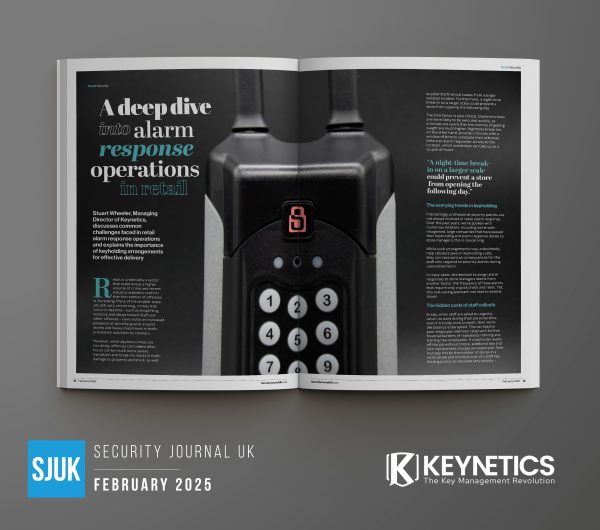
A Deep Dive into Alarm Response Operations in Retail
Stuart Wheeler, Managing Director of Keynetics, discusses common challenges faced in retail alarm response operations and explains the importance of keyholding arrangements for effective delivery.
Retail is undeniably a sector that experiences a higher volume of crime and recent industry statistics confirm that the number of offences is increasing.
Many of the smaller scale, yet still very concerning, crimes that occur in daytime – such as shoplifting, violence and abuse toward staff and other offences – have led to an increased presence of security guards around stores and heavy investment in theft-prevention solutions by retailers.
However, while daytime crimes are troubling, offences committed after-hours can be much more severe.
Vandalism and break-ins result in theft, damage to property and stock, as well as potential financial losses from a single isolated incident. Furthermore, a night-time break-in on a larger scale could prevent a store from opening the following day.
The time factor is also critical. Daytime crimes are more likely to be executed quickly, as criminals are aware that the chances of getting caught are much higher.
Night time break-ins, on the other hand, provide criminals with a window of time to complete their activities before an alarm responder arrives to the location, which sometimes can take up to a couple of hours.
The Worrying Trends in Keyholding
Interestingly, professional security patrols are not always involved in retail alarm response.
Over the past years, we’ve spoken with numerous retailers, including some well-recognised, large companies that have passed their keyholding and alarm response duties to store managers; this is concerning.
While such arrangements may undoubtedly help retailers save on keyholding costs, they can have serious consequences for the staff who respond to security alarms during unsociable hours.
In many cases, the decision to assign alarm responses to store managers stems from another factor: the frequency of false alarms that require only a quick check and reset.
Yet, this cost-saving approach can lead to several issues…
